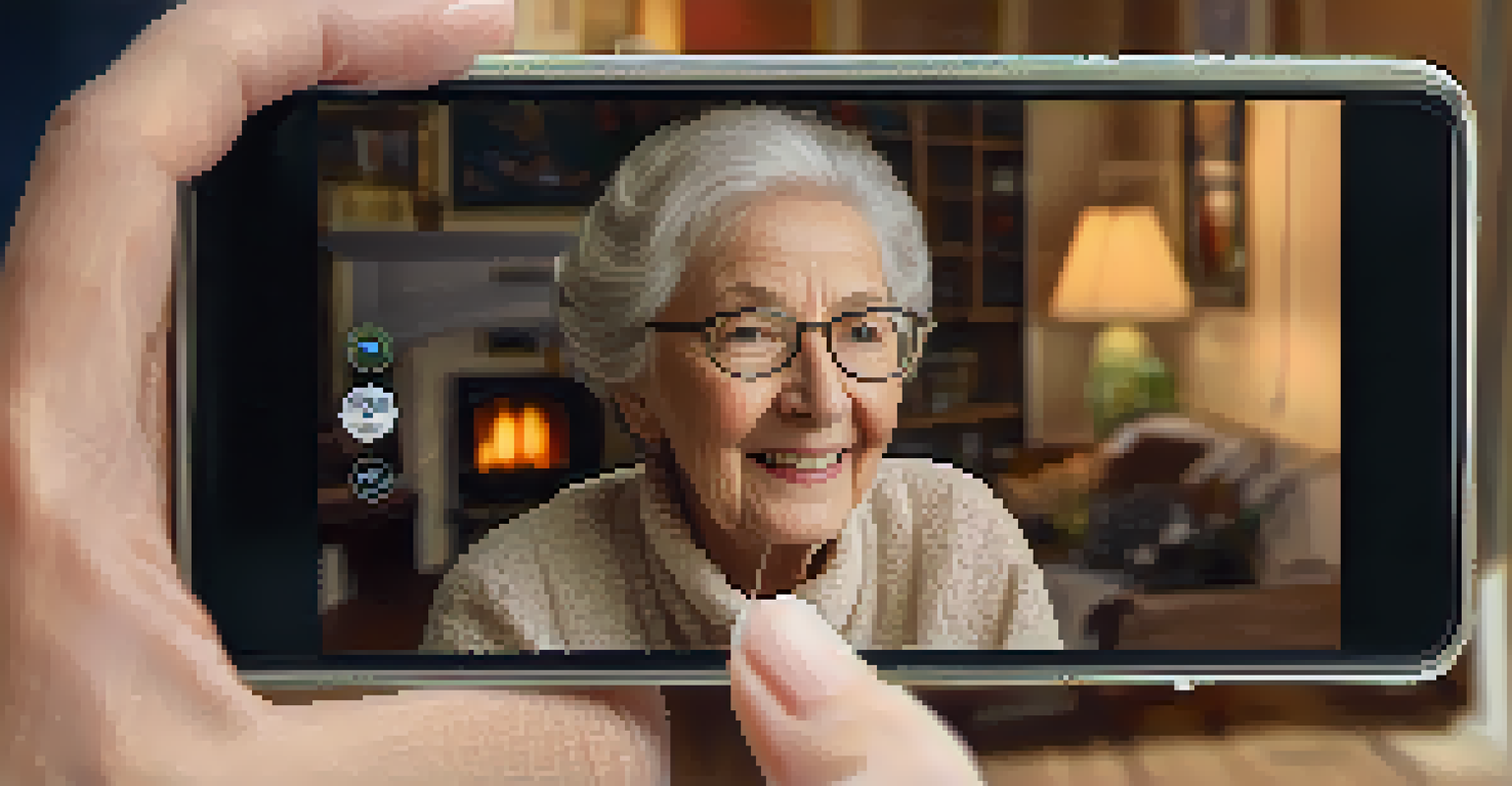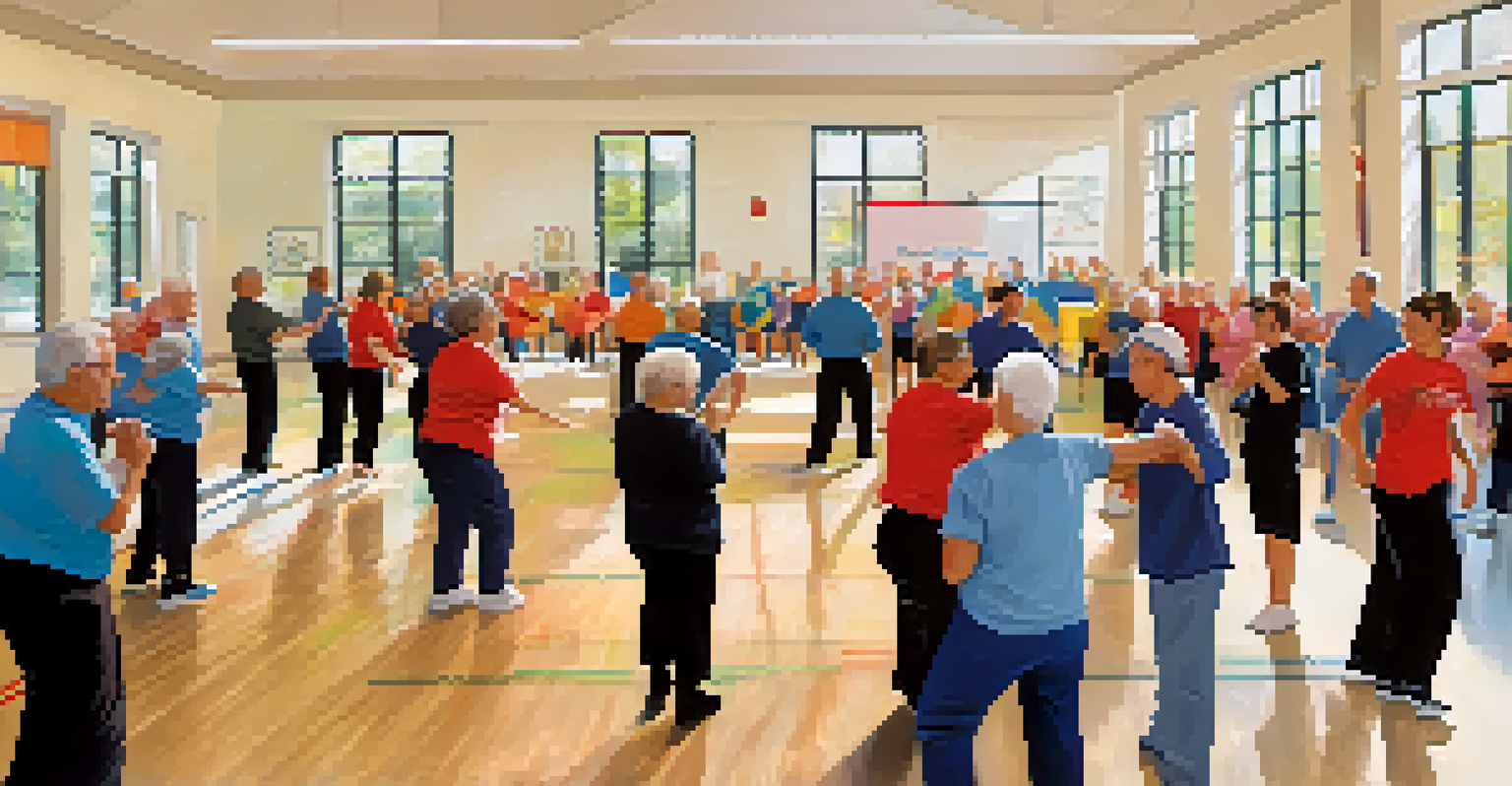Understanding the Unique Self Defense Needs of Elderly Persons

Recognizing the Vulnerabilities of the Elderly
Elderly individuals often face unique vulnerabilities that can make them more susceptible to crime. Factors such as reduced mobility, slower reaction times, and potential health issues can increase their risk. Furthermore, societal perceptions sometimes lead to the elderly being seen as easy targets, which can unfortunately be exploited by opportunistic criminals.
The greatest danger in times of turbulence is not the turbulence; it is to act with yesterday's logic.
It’s important to understand that these vulnerabilities don’t define their capabilities. Many seniors are mentally sharp and possess a wealth of life experience that can be invaluable in self-defense situations. Awareness of their surroundings and the ability to assess risks are crucial skills that can help mitigate potential threats.
By recognizing these vulnerabilities, we can better equip elderly individuals with the knowledge and tools necessary for their self-defense. This understanding fosters a sense of empowerment, enabling them to navigate their environments with confidence and security.
The Importance of Awareness and Prevention
Awareness is the first line of defense for seniors. Encouraging them to stay alert to their surroundings can significantly reduce the likelihood of becoming a victim. Simple practices such as avoiding distractions, like phone use in public spaces, can make a big difference in their safety.

Prevention strategies can also include identifying safe routes for walking or driving and knowing where to seek help if needed. This proactive approach helps seniors feel more in control of their environments, allowing them to enjoy their daily activities without fear.
Empower Seniors Through Awareness
Encouraging elderly individuals to stay alert and informed about their surroundings can significantly enhance their personal safety.
Moreover, educating elderly individuals about common scams and tactics used by criminals can further enhance their awareness. By understanding the potential threats, they can better prepare themselves and take necessary precautions to avoid dangerous situations.
Physical Self-Defense Techniques for Seniors
While physical confrontation is often not ideal, knowing basic self-defense techniques can empower seniors. Techniques that focus on leverage and using an attacker’s strength against them can be particularly effective. For example, simple moves like wrist releases or redirecting an attack can help an elderly person escape a potentially harmful situation.
Safety is not a gadget but a state of mind.
Self-defense classes specifically designed for seniors can provide these techniques in a safe and supportive environment. Instructors can tailor the lessons to seniors’ physical abilities, ensuring that participants feel comfortable and confident in their skills. This kind of training not only equips them with physical skills but also boosts their self-esteem.
Additionally, practicing these techniques regularly can help seniors remain familiar with their options in a crisis. Just as with any skill, practice makes perfect, and regular training can keep their reflexes sharp, giving them greater confidence in their ability to defend themselves.
Utilizing Technology for Personal Safety
In today's digital age, technology can be a powerful ally in personal safety for seniors. Simple tools such as personal alarms or smartphone apps designed for emergency situations can provide an extra layer of security. These devices often allow seniors to alert loved ones or authorities quickly if they feel threatened.
Moreover, wearable technology like smartwatches can include features such as fall detection or location tracking, which can be vital in emergencies. This not only helps in emergencies but also provides peace of mind to both seniors and their families.
Utilize Technology for Safety
Embracing technology, such as personal alarms and smart devices, can offer seniors added security and peace of mind in emergencies.
Encouraging seniors to embrace these technologies can significantly enhance their safety. Familiarity with these tools can empower them to stay connected and safe, helping them maintain independence while being proactive about their well-being.
Building a Supportive Community Network
Community plays a vital role in the safety and well-being of elderly individuals. Building a supportive network of friends, family, and neighbors can create an environment where seniors feel more secure. Regular check-ins, shared activities, and open communication can foster strong relationships that contribute to a sense of safety.
Local community programs and resources can also provide essential support. Many neighborhoods have initiatives focused on enhancing safety for seniors, such as neighborhood watch programs or safety workshops. These resources not only offer practical safety tips but also help seniors connect with others who share similar concerns.
Encouraging seniors to engage with their community can alleviate feelings of isolation, thereby enhancing their overall well-being. A strong community network not only promotes safety but also enriches their lives with social interactions and support.
Identifying Safe Spaces and Resources
Understanding and identifying safe spaces in their environment is crucial for seniors. Familiarizing themselves with places like community centers, libraries, or local shops that have friendly staff or security can provide comfort. These safe spaces can serve as refuge points if they ever feel threatened or uncomfortable.
Moreover, knowing where to find resources such as local police stations or emergency services can empower seniors. Having this information readily available helps them feel more secure when navigating their community. It’s also important for them to have a list of trusted contacts, such as family members or neighbors they can reach out to in an emergency.
Build Community Support Networks
Creating a supportive network of friends and local resources fosters a sense of security and reduces feelings of isolation among seniors.
Encouraging seniors to map out their surroundings with safety in mind can enhance their confidence. This proactive approach not only empowers them but also gives them the tools to take charge of their personal safety.
Promoting Mental and Emotional Resilience
Self-defense isn’t just physical; it also encompasses mental and emotional resilience. For many seniors, cultivating a strong sense of self-worth and confidence can significantly impact their overall safety. Engaging in activities that promote mental health, such as mindfulness practices or social groups, can bolster their emotional well-being.
Building resilience can also involve developing problem-solving skills and assertiveness. Teaching seniors how to effectively communicate their needs and set boundaries can empower them to advocate for themselves in potentially threatening situations. This assertiveness can deter potential threats and enhance their overall confidence.

Encouraging participation in community programs focusing on mental well-being can further support this goal. By fostering a strong mental and emotional foundation, seniors can navigate life’s challenges with greater ease, ultimately improving their self-defense capabilities.